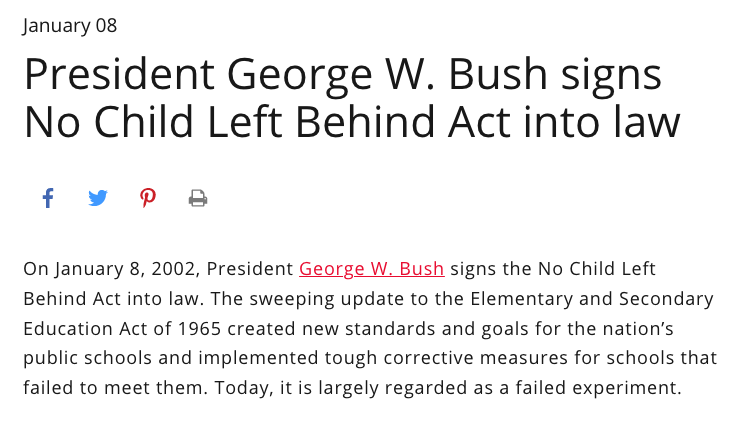“The world hates change, yet it is the only thing that has brought progress.”
Charles Kettering
As we know, change doesn’t mean progress. It is only through sustained, steady, thoughtful change —in the right direction— that we will make progress towards a goal.
For over seven years, No Child Left Behind (NCLB/ESEA – The Elementary and Secondary Education Act) has sat stalled in Congress. After all this time, the American people should not let Congress push through a bill that does not “fix” what is so very wrong with this law. The goal, theory, and methods should all be opened up for close scrutiny.
We need a strong and reasonable federal education law to guide us. We need two “standards” as cornerstones for American education, quality and opportunity.
Changing the Law to Move Us Forward
First, take a look back…..
No Child Left Behind set a very different goal – focused on test scores and federal “accountability.” We can’t afford to continue doing what has proven to be detrimental for too many of our students. It’s not right!
We need Congress to end the misguided mandates and focus the law on preserving and strengthening the whole public system as well as going back to focusing on educationally deprived students.
Progress would mean setting policy to move us towards:
- Wise Investment in Meeting Children’s Needs,
- Personalized Learning,
- Meaningful, Systemic Accountability, and
- Support for Continuous School Improvement.
We have a Guiding Principle (Sec. 101 Amendments): The Congress declares it to be the policy of the United States that a high-quality education for all individuals and a fair and equal opportunity to obtain that education are a societal good, are a moral imperative, and improve the life of every individual, because the quality of our individual lives ultimately depends on the quality of the lives of others.
To have our representatives not read and understand the law is doing business as usual.
To have the people uninformed and unable to weigh in on the law is to bypass the consent of the People. Haven’t we had enough of that?
The public deserves to have the faults in the law made clear in order to judge for ourselves whether or not congress is doing justice to the issue.





